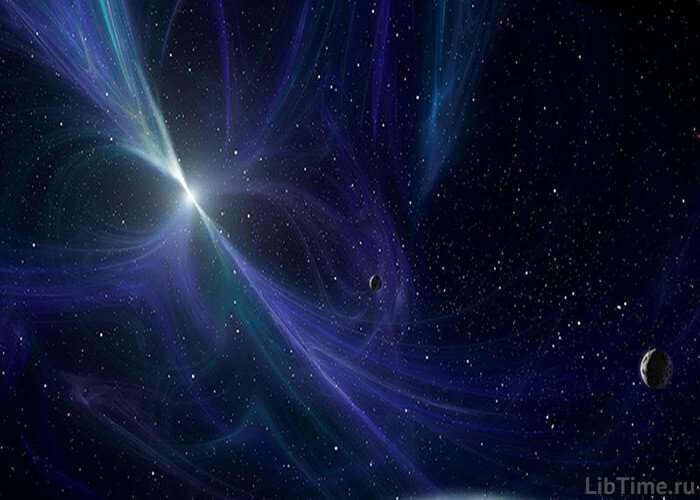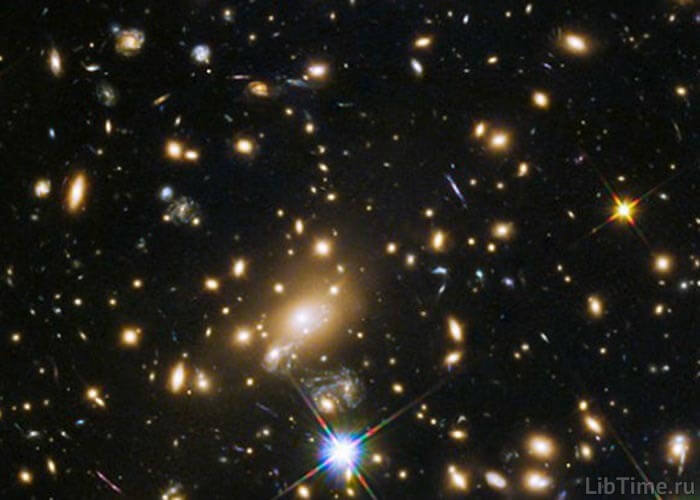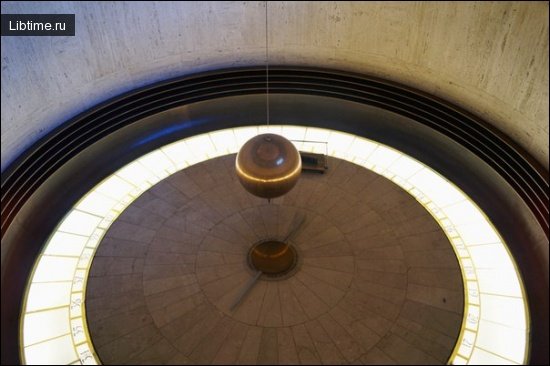Neutron star pulsar
The neutron star pulsar was predicted by theorists, in particular by Academician L . A. Landau in 1932.
Star transformations
Stars do not last forever. Depending on what the star was and how its existence proceeded, the star will turn into either a white dwarf or a neutron star.
If a star collapses, it forms a black hole in space.
These are the ideas about the "death" of stars developed by Academician Ya. Zeldovich and his students. White dwarfs have been known for a very long time. For three decades around this prediction there were disputes.
Controversy, but not exploration. Looking for neutron stars by means of ground-based observatories was pointless: visible rays they probably do not emit, and the rays of other parts of the electromagnetic spectrum are powerless to overcome the armored shield of the Earth's atmosphere.
The universe from outer space
The search only began when the opportunity arose to look at the universe from outer space. In late 1967, astronomers made a sensational discovery. At a certain point in the sky suddenly lit up and after a hundredth of a second extinguished a point source of radio beams.
About a second later, the flash was repeated. These repetitions followed each other with the precision of a ship's chronometer. It seemed like a distant beacon winking at observers through the black night of the universe.
A neutron star pulsar
Then quite a few such beacons became known. It turned out that they differ from each other in the periodicity of beam pulses, the composition of radiation. Most pulsars - so named for these newly discovered stars - had a total period duration from a quarter of a second to four seconds.
Today, the number of pulsars known to science is about 2000. And the possibilities for new discoveries are far from exhausted. Pulsars are neutron stars. It is difficult to imagine any other mechanism, with iron precision igniting and extinguishing the flash of a pulsar than the rotation of the star itself.
On one side of the star is "installed" source of radiation, and with each rotation of its axis, the emitted beam for a moment falls on our Earth. But what stars are capable of rotating at several revolutions per second? Neutron stars - and no others.
Our Sun, for example, makes one revolution in almost 25 days; increase the speed - and centrifugal forces simply tear it apart, tear it apart.
On neutron stars, however, matter is compressed to densities unimaginable under normal conditions. Each cubic centimeter of neutron star matter would weigh between 100,000 and 10 billion tons under Earth conditions! Fatal compression dramatically reduces the diameter of the star.
If in their shining life stars have diameters of hundreds of thousands and millions of kilometers, the radii of neutron stars rarely exceed 20-30 kilometers. Such a small "flywheel", and moreover tightly riveted by the forces of universal gravitation, can be spun at a speed of a few revolutions per second - it will not collapse.
A neutron star has to be spinning very fast. Have you ever seen a ballerina spinning, standing up on one toe and holding her arms tightly to her body? But when she spreads her arms, her spinning immediately slows down. A physicist would say the moment of inertia has increased.
In a neutron star, as its radius decreases, the moment of inertia, on the contrary, decreases, it seems to "press its arms" closer and closer to the body. The speed of its rotation increases rapidly. And when the diameter of the star decreases to the above value, the number of its revolutions around the axis should be just the same, which provides the "pulsar effect".
Physicists would very much like to be on the surface of a neutron star and put a few experiments. After all, there must exist conditions similar to which there is nowhere else: fantastic magnitude of the gravitational field and fantastic strength of the magnetic field.
According to the calculations of scientists, if the shrinking star had a magnetic field of very modest magnitude - one ersted (the magnetic field of the Earth, obediently turning the blue compass arrow to the north, is equal to about half an ersted), then the neutron star field strength can reach 100 million and trillion ersted!
In the 20s of the twentieth century, during his work in the laboratory of E. Rutherford, the famous Soviet physicist Academician P. L. Kapitsa made an experience of obtaining superstrong magnetic fields. He managed to obtain in a volume of two cubic centimeters magnetic field of unprecedented strength - up to 320 thousand ersted. Of course, this record has now been surpassed.
By means of the most complicated tricks, having dropped on a single coil of solenoid the whole electric niagara - the power of a million kilowatts - and exploding thus auxiliary gunpowder charge, contrive to get the magnetic field strength up to 25 million ersted.
This field exists for a few millionths of a second. And on a neutron star it is possible to have a constant field thousands of times larger!
The structure of a neutron star
Soviet scientist Academician V.L. Ginzburg drew a fairly detailed picture of the structure of a neutron star. Its surface layers should be in a solid state, and already at a depth of a kilometer with increasing temperature, the solid crust should be replaced by a neutron liquid, containing in its composition some admixture of protons and electrons, a liquid of the most amazing properties, superfluid and superconducting.
Under terrestrial conditions, the only example of a superfluid is the behavior of so-called helium-2, liquid helium, at temperatures near absolute zero. Helium-2 is able to flow instantaneously out of a vessel through the tiniest hole, able, disregarding gravity, to rise up the wall of the test tube.
Superconductivity is also known in terrestrial conditions only at very low temperatures. Like superfluidity, it is a manifestation in our conditions of the laws of the world of elementary particles.
In the very center of a neutron star, according to Academician V.L. Ginzburg, there may be neither superfluid nor superconducting nucleus. Two giant fields - gravitational and magnetic, create a kind of wreath around the neutron star. The rotation axis of the star does not coincide with the magnetic axis, and this causes the "pulsar effect".
If we imagine that the magnetic pole of the Earth (more details: Magnetic pole of the Earth) is located at the place of Lake Baikal and that a radio transmitter antenna directed to the zenith, with a narrow enough beam of directivity, is installed at this place, then any area of space, falling within the zone of "visibility" of this beam, will periodically receive signals from the transmitter.
Thus, the neutron star pulsar emits narrowly directed streams of radio emission, which, as a result of rotation of the neutron star, fall into the observer's field of view at regular intervals of time.


